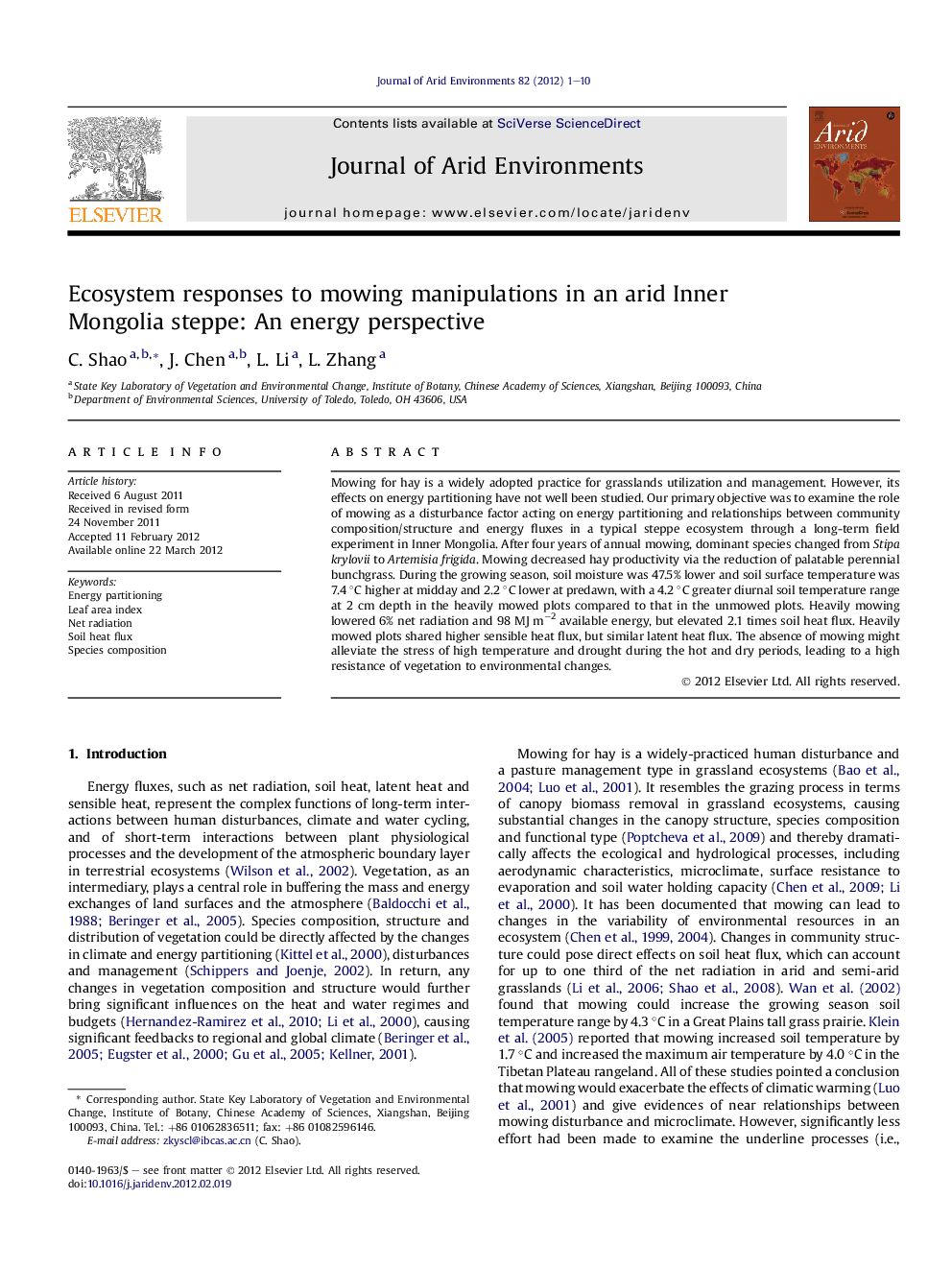| Article ID | Journal | Published Year | Pages | File Type |
|---|---|---|---|---|
| 4393368 | Journal of Arid Environments | 2012 | 10 Pages |
Mowing for hay is a widely adopted practice for grasslands utilization and management. However, its effects on energy partitioning have not well been studied. Our primary objective was to examine the role of mowing as a disturbance factor acting on energy partitioning and relationships between community composition/structure and energy fluxes in a typical steppe ecosystem through a long-term field experiment in Inner Mongolia. After four years of annual mowing, dominant species changed from Stipa krylovii to Artemisia frigida. Mowing decreased hay productivity via the reduction of palatable perennial bunchgrass. During the growing season, soil moisture was 47.5% lower and soil surface temperature was 7.4 °C higher at midday and 2.2 °C lower at predawn, with a 4.2 °C greater diurnal soil temperature range at 2 cm depth in the heavily mowed plots compared to that in the unmowed plots. Heavily mowing lowered 6% net radiation and 98 MJ m−2 available energy, but elevated 2.1 times soil heat flux. Heavily mowed plots shared higher sensible heat flux, but similar latent heat flux. The absence of mowing might alleviate the stress of high temperature and drought during the hot and dry periods, leading to a high resistance of vegetation to environmental changes.
► We provide field data on energy partitioning and their relationships with plants. ► Dominant species changed from tall bunchgrass to semi-shrub after four years mowing. ► Unmowed plots could better alleviate the stress of high temperatures and drought. ► Mowed plots shared higher sensible but similar latent heat flux than unmowed plots.
